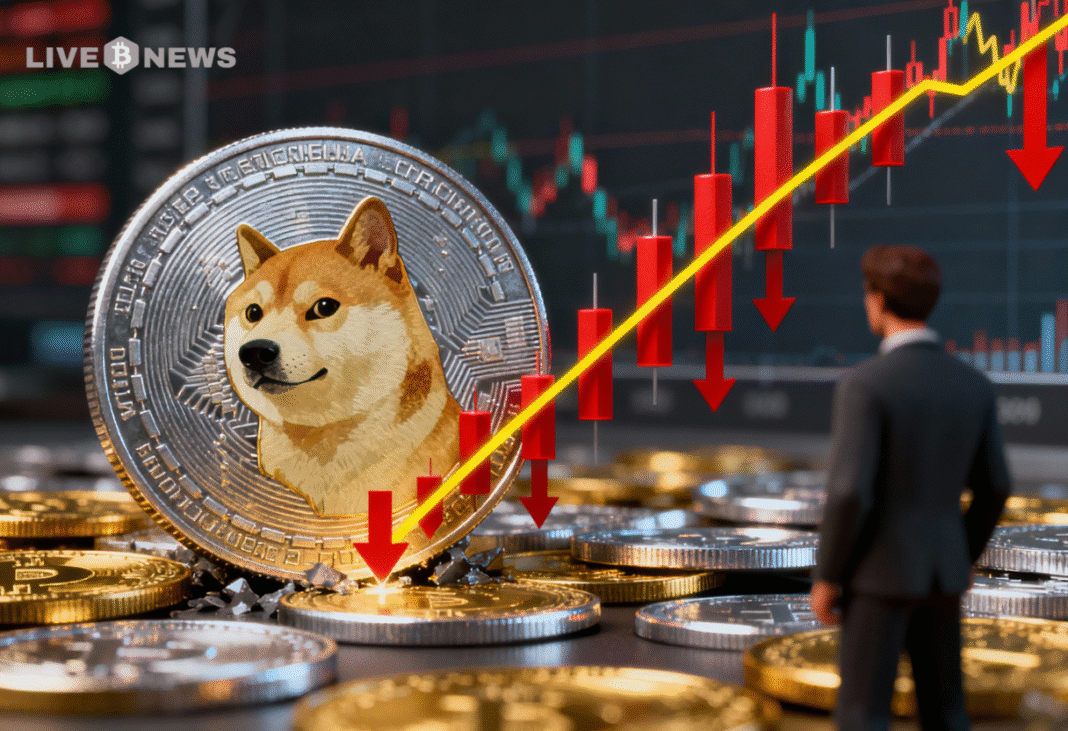XRP ETF Debuts on Nasdaq as XRPC Hits $26M Volume Within First 30 Minutes: Can It Outpefom Bitwise’s BSOL?
TLDR:
- XRPC hit $26M in first-half hour trading, nearly doubling projections from Bloomberg’s Eric Balchunas.
- Whale accumulation preceded retail inflows, intensifying volatility after the XRP ETF announcement.
- XRPC offers regulated exposure to XRP’s payment and liquidity protocols via Nasdaq listing.
- Canary Capital cautioned investors about volatility and regulatory uncertainty tied to XRP markets.
The launch of Canary Capital’s spot XRP ETF marked a major milestone for the digital asset market. The fund, listed on Nasdaq under the ticker XRPC, became effective after the exchange certified its listing, opening for trade at today’s U.S. market open.
Within 30 minutes, XRPC recorded $26 million in trading volume, outperforming early projections. The debut comes as institutional and retail investors react to a shift in XRP market behavior.
Canary’s XRPC ETF Gains Strong Opening Momentum
XRPC’s early trading session drew rapid inflows as investors sought exposure to XRP through a regulated structure.
The ETF aims to track the native asset of the XRP Ledger, reflecting its use in payments and liquidity protocols. Canary Capital described the fund as designed for efficiency and scalability, mirroring XRP’s role in cross-border settlements.
Trading data shared by Bloomberg ETF analyst Eric Balchunas showed XRPC surpassing expectations, nearly doubling his $17 million volume estimate.
He added that XRPC could challenge $BSOL’s $57 million day-one record for the year’s largest ETF launch. This robust debut indicates strong early interest despite warnings of volatility and liquidity risks tied to XRP’s market conditions.
According to Canary Capital, the fund is not registered under the Investment Company Act of 1940 and does not operate as a commodity pool. It offers exposure distinct from traditional ETFs, while carrying notable market and regulatory risks.
The firm highlighted that XRP’s price may fluctuate sharply, emphasizing potential losses for speculative investors.
Market watchers pointed to XRPC’s immediate traction as a sign of pent-up demand for diversified crypto exposure beyond Bitcoin and Ethereum. The XRP Ledger’s established role in payments infrastructure could further attract investors seeking blockchain-backed utility rather than pure speculation.
Whale Activity Surged Before XRP ETF Launch
Data from CryptoQuant suggested that large XRP holders positioned early ahead of the ETF announcement. Whale-sized orders increased while XRP’s price remained compressed, signaling institutional preparation before retail participation.
Once the ETF news broke, smaller traders entered rapidly, adding volatility and reducing predictability.
Analyst Woo Minkyu observed that this behavior reflects a recurring crypto market pattern, early whale accumulation followed by retail entry. As both groups now interact in XRP’s liquidity pool, short-term market moves could swing sharply with sentiment shifts.
 Source: CryptoQuant
Source: CryptoQuant
The ETF’s introduction accelerated this phase by drawing attention from previously inactive traders.
While the ETF launch does not guarantee sustained price performance, analysts view it as a pivotal liquidity event for XRP markets. It places XRP alongside other major digital assets with spot ETF representation, potentially widening its investor base through regulated channels.
The post XRP ETF Debuts on Nasdaq as XRPC Hits $26M Volume Within First 30 Minutes: Can It Outpefom Bitwise’s BSOL? appeared first on Blockonomi.
You May Also Like

Crypto execs met with US lawmakers to discuss Bitcoin reserve, market structure bills
Lawmakers in the US House of Representatives and Senate met with cryptocurrency industry leaders in three separate roundtable events this week. Members of the US Congress met with key figures in the cryptocurrency industry to discuss issues and potential laws related to the establishment of a strategic Bitcoin reserve and a market structure.On Tuesday, a group of lawmakers that included Alaska Representative Nick Begich and Ohio Senator Bernie Moreno met with Strategy co-founder Michael Saylor and others in a roundtable event regarding the BITCOIN Act, a bill to establish a strategic Bitcoin (BTC) reserve. The discussion was hosted by the advocacy organization Digital Chamber and its affiliates, the Digital Power Network and Bitcoin Treasury Council.“Legislators and the executives at yesterday’s roundtable agree, there is a need [for] a Strategic Bitcoin Reserve law to ensure its longevity for America’s financial future,” Hailey Miller, director of government affairs and public policy at Digital Power Network, told Cointelegraph. “Most attendees are looking for next steps, which may mean including the SBR within the broader policy frameworks already advancing.“Read more

Dogecoin Price Prediction: Dogecoin Battles Key EMA Support Amid 5% Price Drop
